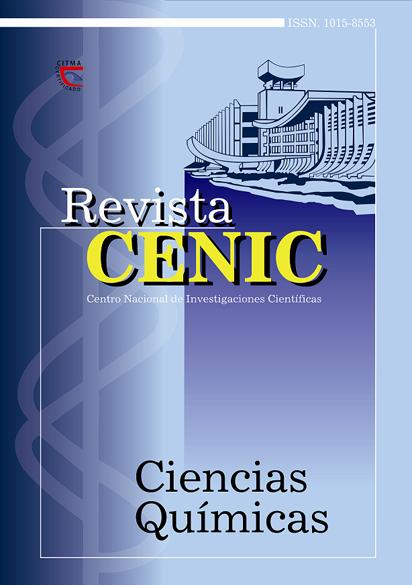Separation of the components of the mixture azeotropic acetone-n-hexane by a process combined: liquid-liquid extraction and distillation discontinuous
Abstract
Separation of azeotropic mixtures is a task usually encountered in the fine chemicals industry. Solvent
extraction is an attractive option when distillation is not an efficient alternative. In this paper are decribed basic studies
for the separation of the azeotropic mixture acetone-n hexane by using a combined process. First, separation of acetone
from the binary original mixture is performed by solvent extraction considering a counter-cross flow configuration. Then,
the recovery of acetone and the solvent from the extracted phase is carried our by batch distillation. First, we deal with
the choice of an adequate extractor solvent taking into account several criteria such as selectivity, capability and recoverability.
Then, we validate the feasibility of the flowsheet via simulation by using the commercial softwares Super-Prog
and ProSim Batch. Finally, the operating conditions obtained by simulation were corroborated in an experimental bench
installation and an adequate agreement was obtained between calculated and experimental values. The experimental
results show that the 87. 9 % of n-hexane was recovered in the raffinate phase of the solvent extraction process. On the
other hand, acetone was obtained as a distillate with a molar purity of 99. 5 % and the ethylenglicol was recovered with
the same value of purity. Ethylenglicol can be reused in the next batch process and only 0. 35 % of ethylenglicol has to
be added as a fresh solvent

Downloads
Published
How to Cite
Issue
Section
License

This work is licensed under a Creative Commons Attribution-NonCommercial-ShareAlike 4.0 International License.
Los autores que publican en esta revista están de acuerdo con los siguientes términos:
Los autores conservan los derechos de autor y garantizan a la revista el derecho de ser la primera publicación del trabajo al igual que licenciado bajo una Creative Commons Atribución-NoComercial-CompartirIgual 4.0 que permite a otros compartir el trabajo con un reconocimiento de la autoría del trabajo y la publicación inicial en esta revista.
Los autores pueden establecer por separado acuerdos adicionales para la distribución no exclusiva de la versión de la obra publicada en la revista (por ejemplo, situarlo en un repositorio institucional o publicarlo en un libro), con un reconocimiento de su publicación inicial en esta revista.
Se permite y se anima a los autores a difundir sus trabajos electrónicamente (por ejemplo, en repositorios institucionales o en su propio sitio web) antes y durante el proceso de envío, ya que puede dar lugar a intercambios productivos, así como a una citación más temprana y mayor de los trabajos publicados (Véase The Effect of Open Access) (en inglés).













